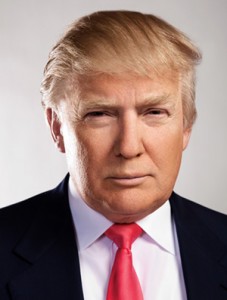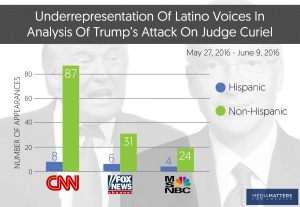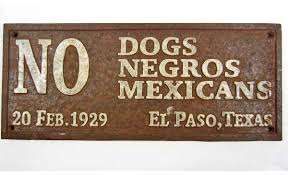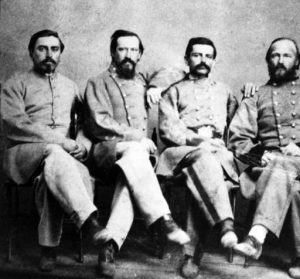Monday’s debate will be watched by 100 million people. It pits Hillary Clinton against Donald Trump.
 Clinton needs to do three things: keep her composure and pepper the debate with light humor sprinkled with
Clinton needs to do three things: keep her composure and pepper the debate with light humor sprinkled with  snide and sarcastic remarks that will mentally dismantle Trump’s ego. Also carpet bomb Trump with facts that will make him look like a deer caught in the headlights.
snide and sarcastic remarks that will mentally dismantle Trump’s ego. Also carpet bomb Trump with facts that will make him look like a deer caught in the headlights.
These must be bite-size facts so low information-voters can understand them.
Facts to Trump are like crucifixes to vampires, in this case a bloodsucking parasite turned politician who has managed to convince millions of Deplorables that a con man with the scruples of a sewer rat and the intelligence of a slug would be a good choice to be the president of the greatest country on the planet.
I am going to skip Monday’s debate because I am too embarrassed to watch this racist buffoon and liar make a fool of himself, and consider it a sad and shameful era where America was dragged into the gutter by a mentally unstable man.
I am going to go to the movies and watch the “Magnificent Seven.”
For the record, I have never voted for Hillary Clinton, and only voted for Obama when he ran for reelection. But I will never vote for another politician who runs under the GOP banner with its racist and hateful agenda.
Period.
Latinos on Cable News
A Media Matters study found that Latinos made up only a small fraction of guests invited on cable news hows to discuss Republican presidential nominee Donald Trump’s attacks on Judge Gonzalo Curiel’s Mexican heritage.
No surprise.
The media liberals will give Hispanics a lot of lip service, especially when it comes to immigration. But Hispanics are nearly invisible on the cable news’ discussions about the economy, jobs, education, defense or foreign policy. It is as though Hispanics are only concern about immigration and aren’t capable of contributing to the conversations surrounding other political, social or economic matters.
invisible on the cable news’ discussions about the economy, jobs, education, defense or foreign policy. It is as though Hispanics are only concern about immigration and aren’t capable of contributing to the conversations surrounding other political, social or economic matters.
The article featured input from Media Matters Hispanic media researcher Cristina López, who explained that this finding is representative of a larger tendency in the media to marginalize the Latino perspective in their reporting, which could have serious “negative effects” and “perpetuate damaging stereotypes” about Latinos.
 The September 21 report focused on a Media Matters quantitative study of guest diversity on CNN, Fox News, and MSNBC that found that only 11.5 percent of guests discussing Trump’s racist attacks against a Latino judge were Hispanic, while the majority of those discussing the topic — 88.5 percent — were non-Hispanic.
The September 21 report focused on a Media Matters quantitative study of guest diversity on CNN, Fox News, and MSNBC that found that only 11.5 percent of guests discussing Trump’s racist attacks against a Latino judge were Hispanic, while the majority of those discussing the topic — 88.5 percent — were non-Hispanic.
The Lynching of Brown People In America
The contributions and achievements of Hispanics in the U.S. have also been for the most part marginalized for decades, and little has been written in American history books about he lynching of thousands of Mexicans by mobs from the mid-19th century and well into the 20th century.
The lynchings were second only to African-Americans in the scale and scope of the crimes.
The New York Times reported about these lynchings last year.
 One case, largely overlooked or ignored by American journalists but not by the Mexican government, was that of seven Mexican shepherds hanged by white vigilantes near Corpus Christi, Tex., in late November 1873, according to the NYT.
One case, largely overlooked or ignored by American journalists but not by the Mexican government, was that of seven Mexican shepherds hanged by white vigilantes near Corpus Christi, Tex., in late November 1873, according to the NYT.
The mob was probably trying to intimidate the shepherds’ employer into selling his land. None of the killers were arrested.
From 1848 to 1928, mobs murdered thousands of Mexicans, though surviving records allowed us to clearly document only about 547 cases. These lynchings occurred not only in the southwestern states of Arizona, California, New Mexico and Texas, but also in states far from the border, like Nebraska and Wyoming.
 Some of these cases did appear in press accounts, when reporters depicted them as violent public spectacles, as they did with many lynchings of African-Americans in the South. For example, on July 5, 1851, a mob of 2,000 in Downieville, Calif., watched the extralegal hanging of a Mexican woman named Juana Loaiza, who had been accused of having murdered a white man named Frank Cannon.
Some of these cases did appear in press accounts, when reporters depicted them as violent public spectacles, as they did with many lynchings of African-Americans in the South. For example, on July 5, 1851, a mob of 2,000 in Downieville, Calif., watched the extralegal hanging of a Mexican woman named Juana Loaiza, who had been accused of having murdered a white man named Frank Cannon.
Such episodes were not isolated to the turbulent gold rush period. More than a half-century later, on Nov. 3, 1910, a mob snatched a 20-year-old Mexican laborer, Antonio Rodríguez, from a jail in Rock Springs, Tex. The authorities had arrested him on charges that he had killed a rancher’s wife. Mob leaders bound him to a mesquite tree, doused him with kerosene and burned him alive.
The El Paso Herald reported that thousands turned out to witness the event; we found no evidence that anyone was ever arrested, according to the NYT report.
While there were similarities between the lynchings of blacks and Mexicans, there were also clear differences. One was that local authorities and deputized citizens played particularly conspicuous roles in mob violence against Mexicans.
Part of the problem has been that so-called Hispanic civil rights groups like the League of United Latin American Citizens have been out to lunch, especially in cases involving the killing of Latinos by police. Of the 795 people killed by police so far this year, 130 were Latinos, according to the Guardian newspaper, which keeps track of these deaths.
Click here to read the entire report: NYT
Thousands of Mexican Texans Served in the Civil War
Most people know that many Hispanics fought in many of America’s wars, including World War I, World War II, Korea, Vietnam, Iraq and Afghanistan. But few know that thousands of Mexican-Texans fought in the Civil War.
 Secession and the Civil War deeply divided the Mexican Americans of Texas (Tejanos). Accusations of subversion and disloyalty before the war resulted in a reluctance by many of them to become involved in the conflict.
Secession and the Civil War deeply divided the Mexican Americans of Texas (Tejanos). Accusations of subversion and disloyalty before the war resulted in a reluctance by many of them to become involved in the conflict.
Those who joined militia units in South Texas and on the frontier frequently did so out of a fear of being sent out of the state and away from their families.
Some were able to avoid conscription by claiming to be residents of Mexico. Tejano frustrations during the Civil War are exemplified by the case of Capt. Adrián J. Vidal, who joined the Confederacy but deserted and enlisted in the Union Army, only to desert again and join the liberals in Mexico, where he was captured by the French and executed.

At least 2,500 Mexican Texans joined the Confederate Army. The most famous was Santos Benavides, who rose to command the Thirty-third Texas Cavalry as a colonel, and thus became the highest ranking Tejano to serve the Confederacy.
Though it was ill equipped, frequently without food, and forced to march across vast expanses of South Texas and northern Mexico, the Thirty-third was never defeated in battle.
Other Texas Mexicans, resentful of growing non-Hispanic political dominance of their communities, enlisted in federal blue.
Many joined the Union Army for the bounty money offered upon enlistment, but some enlisted because they opposed slavery or to satisfy grudges against landowners, attorneys,and politicians who had used the American legal system to take valuable land from Tejanos during the preceding decade.
Source: Texas State Historical Association
BTW: September is Hispanic Heritage Month

